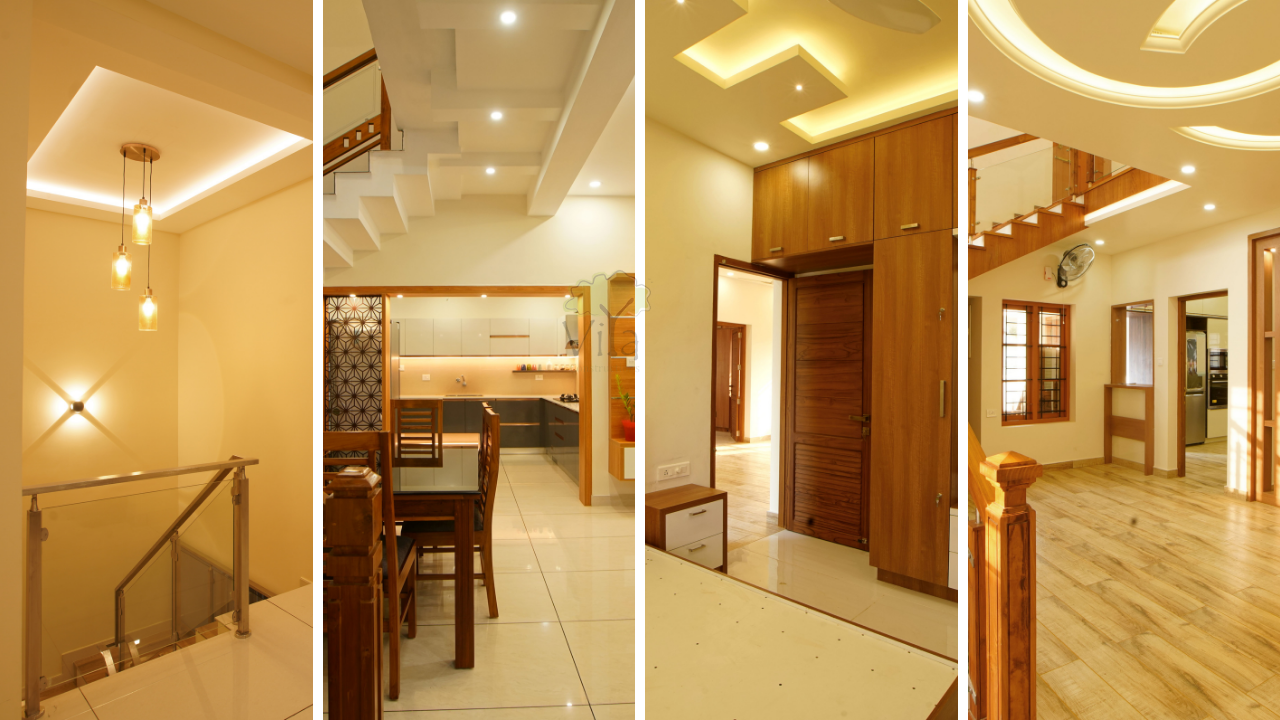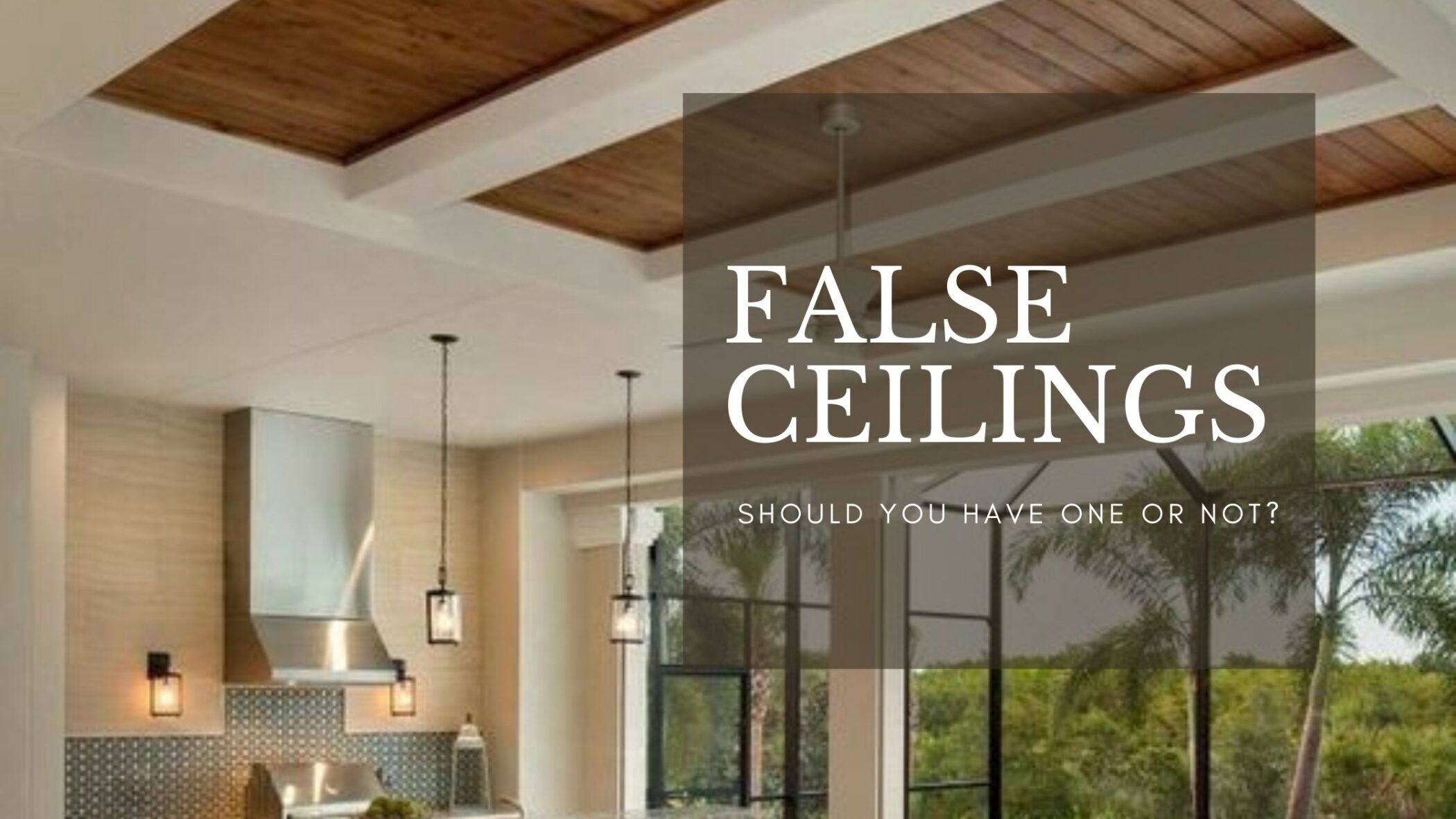False Ceiling – Should you or should you not?
False ceiling is an interior design element used to enhance the aesthetics of your interiors and thereby the beauty of your home. Things have changed a lot from the times when false ceilings were considered part of office room décor. They are now an inevitable part of urban home interiors and the trend is here to stay.
In this post, let’s find out more about false ceilings and decide whether you should have one in your home!
What is a False Ceiling?
Also known as Dropped ceiling, suspended ceiling, grid ceiling, T bar ceiling, false ceilings have been in use in Japan from as early as the 15th century. Modern day false ceilings are nothing but a secondary ceiling done below the main ceiling. There are various reasons for which you use a false ceiling, but the most important one is for its aesthetic appeal.
Here are some False Ceiling works done at our projects

When should you use false ceiling?
As mentioned earlier, the primary reason for using a false ceiling is to enhance the aesthetic appeal of the interiors of your building. However, in addition to the sophistication that it offers, the false ceiling has several functional advantages too. Since the false ceiling reduces the height of the building, the cost of heating or cooling such a room would be considerably lower than that of an ordinary room.
Furthermore, the use of false ceiling creates an additional layer between the two ceilings. Air fills this gap and prevents overheating the room.
Choose false ceilings only when the ceiling of your building is high. Normal ceiling height is about 2.9 – 3m. Never add a false ceiling for low height rooms, as it would make the room appear smaller and claustrophobic.
Popular False Ceiling Materials
A variety of materials are now available in the market now for false ceilings. Here are a few popular options.
- Gypsum – Gypsum is the most popular false ceiling material, due to its light weight, high durability, and strength. They are available in large sized sheets, thereby reducing the number of joint lines required to cover the room.
- Plaster of Paris – This is a very cost-effective false ceiling material. POP is available as a powder that hardens on contact with water. For the same reason, PoP can be moulded into any desired shape. It is very easy to paint a PoP ceiling, as paint settles very well on PoP. However, use of PoP should be done only by skilled labour as the ratio of water and PoP mix plays a key role in the final outcome. PoP gives a classy look to your living rooms and bedrooms, especially when used in combination with wood or glass.
- Wood – For elegance and sophistication, wood is the go-to option in false ceilings. Wooden panels in combination with PoP or gypsum ceilings can also be used for the contrast look. However, wooden ceilings are very expensive.
- Fibre – Fibre tiles are available in standard sizes and is best suited for office spaces and showrooms. It is very budget friendly and provides very good noise and heat resistance.
- Glass – You may use plain, stained or carved glass as false ceilings. Transparent plain glass provides a view of the surroundings and sky above, while the colourful stained and carved glass adds glamour to your spaces. However, glass is an expensive option and requires higher amount of care.
- Metal – Galvanized Iron and Aluminium when designed well (eg. Lattice design), make excellent false ceilings. They are more suited for large spaces.
How is the false ceiling fixed?
The height at which the false ceiling is to be installed is determined first and a marking is made on the wall. Steel framework is screwed into the wall. Grids are then placed in the framework. It is optimal to use 1.5ftx1.5ft grids to give adequate support to the false ceiling materials. The heavier the material that you plan to use, the stronger the grid should be.
Though wider grids might get you a cost reduction, it’s usage not advisable as it may cause the false ceiling board to sag in the long run. In any case, do not let the grids to be spaced wider than 2ftx2ft.
From the various junctions in the grid, connections to the roof are made using steel rods. They are connected using anchor bolts. This process helps to avoid sagging due to the weight of the board.
Once the grid work is complete, the electrical points are done, after which the board is fixed to the grid. Boards are available at many sizes and so you might have to stick them together at various joints. A grid sticker is used for this purpose.
Apply putty and paint for a seamless finish.
Designs
- Layered design – False ceiling can be designed in a single layer or multi-layer. The single layer is the most used option thanks to its minimalistic design. For those who wish to experiment with designs, the multi layered option is a great choice. This is a very versatile option, and you may experiment with various colours, patterns, textures, lighting, and combinations of materials.
- Tray or recessed ceiling – In this type of design, the central part of the ceiling is higher than the edges to make it look like an inverted tray. Usually, a groove runs along the perimeter of the tray. LED strip lights can be placed here to create a lighting effect where the source of light is not visible.
- Coffered False ceiling- Coffers are sunken square or rectangular boxes that are fixed into a ceiling.
Advantages
Disadvantages
Maintenance
False ceilings require extra maintenance when compared to the normal roof ceiling. Make sure you inspect the materials used for the ceilings periodically for dust, wear and tear, cracks, or fungal growth. In the case of wiring or AC ducts placed between the real and false ceilings, they should also be checked periodically.
Before hanging anything from a false ceiling, make sure you check that it is strong enough to bear the weight.
High quality false ceilings, if well maintained can last upto about 20 years.
